|
Aricia anteros / Blue Argus
Ballkanja anteros
Lycaenidae - Polyommatinae
Aricia anteros (Freyer, 1839). TL: Constantinople.
 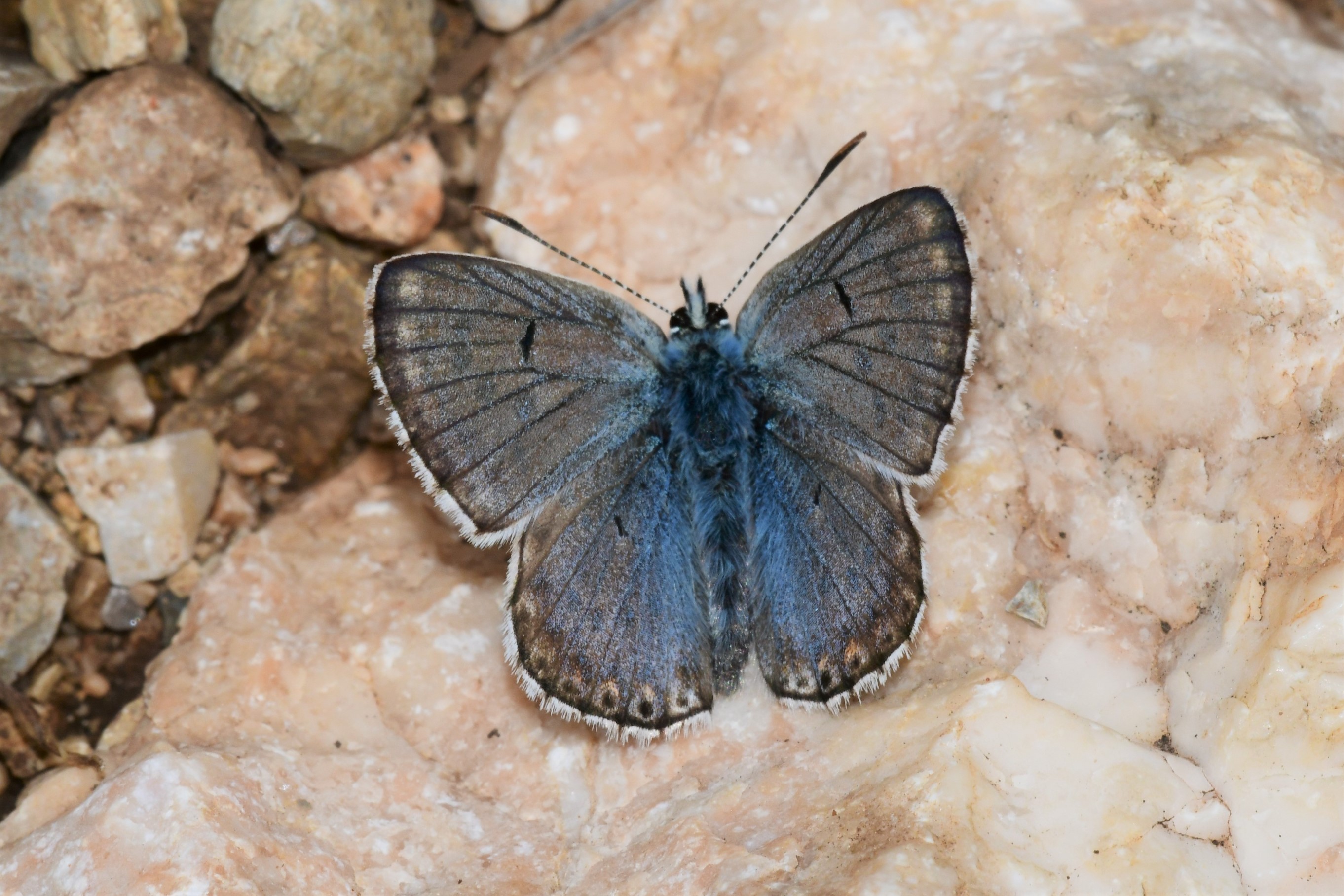
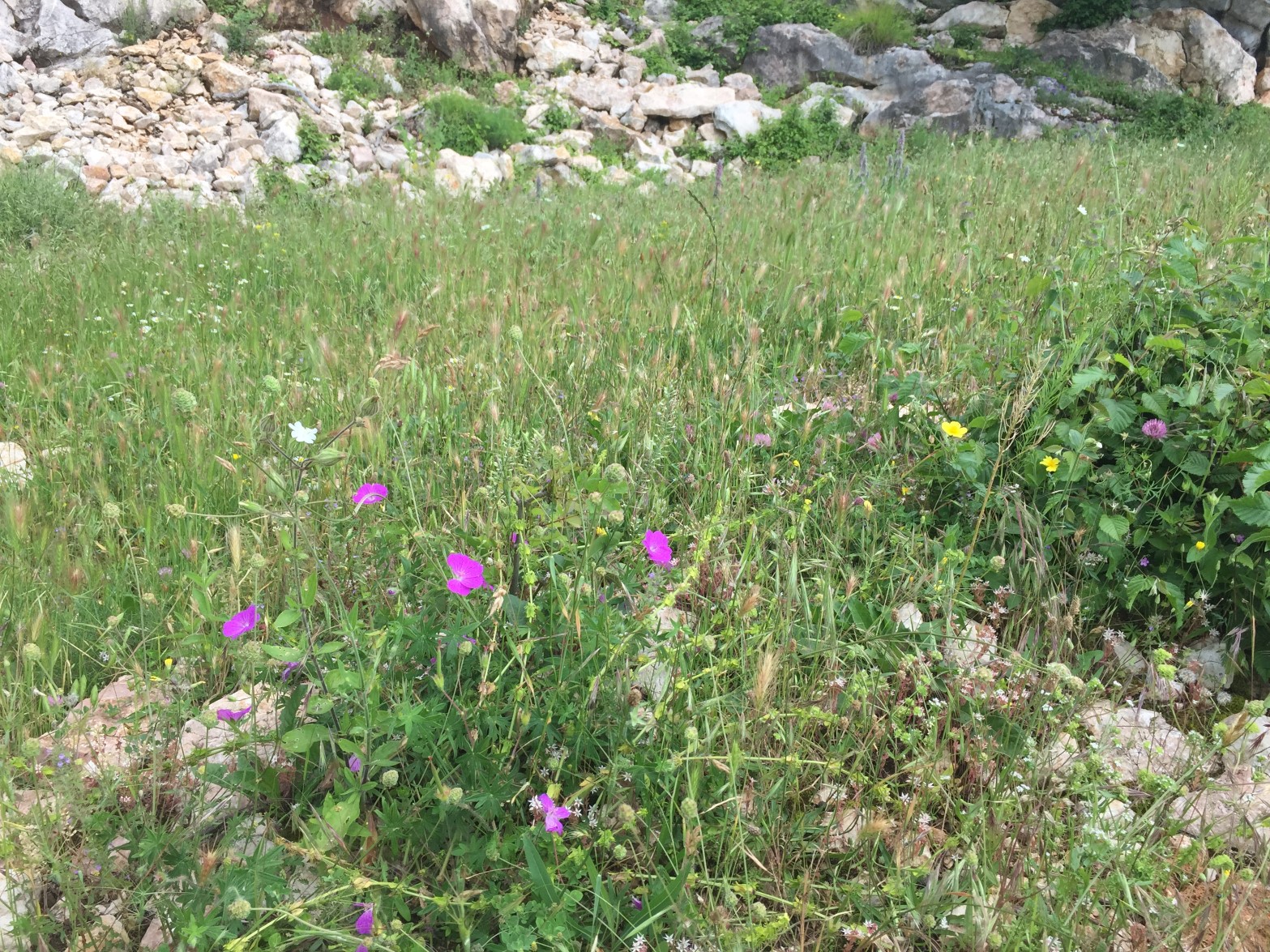 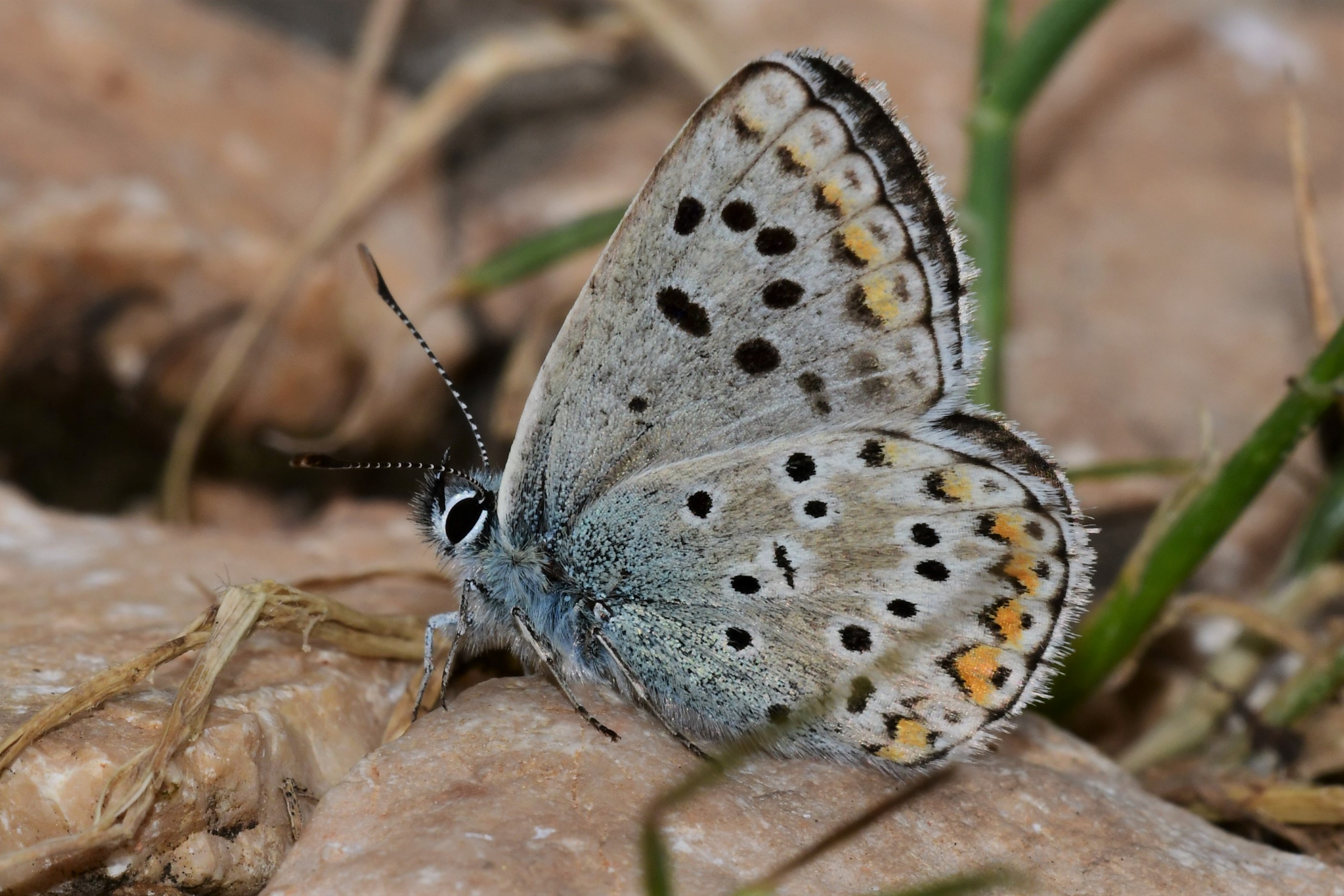
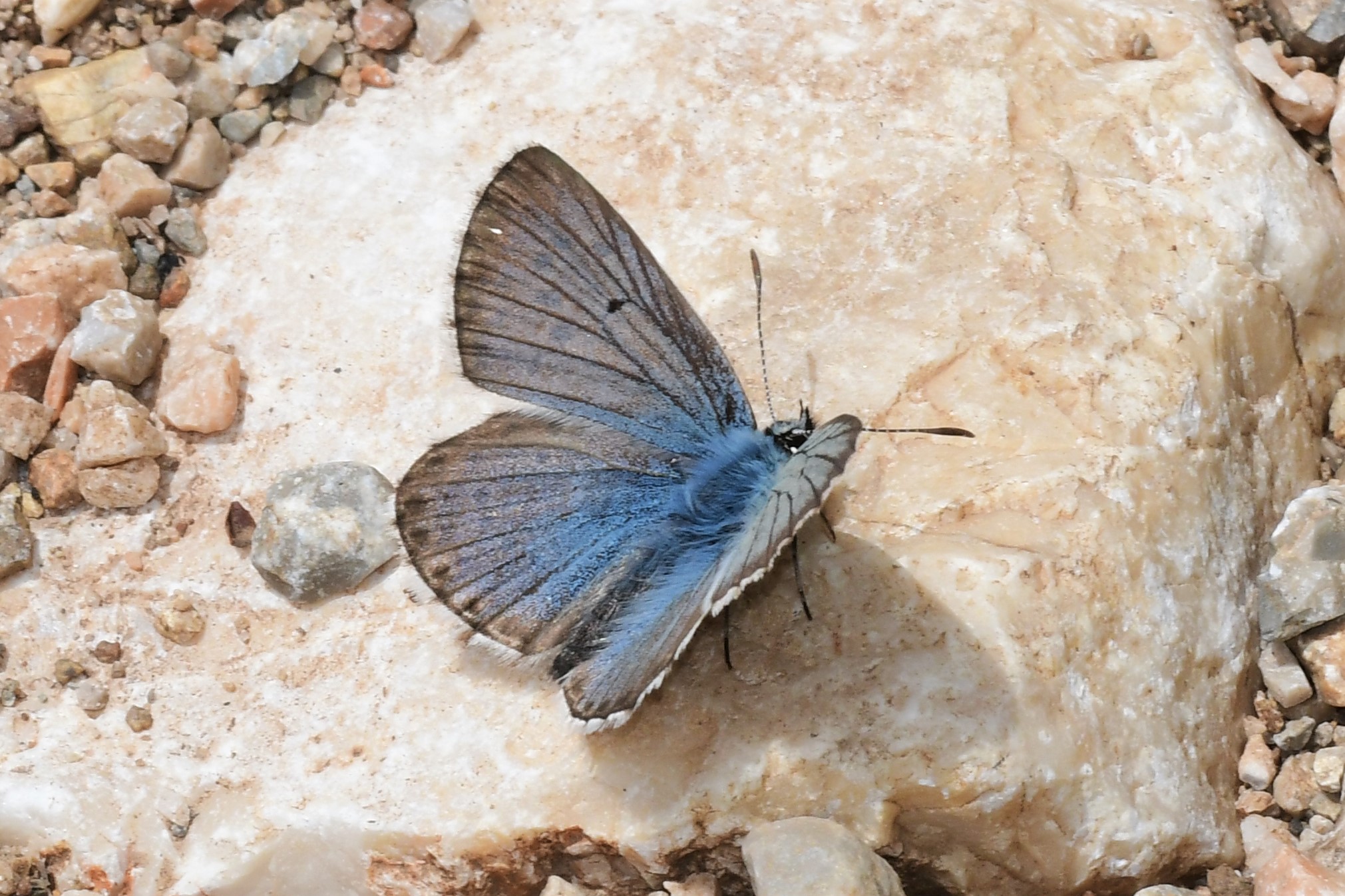 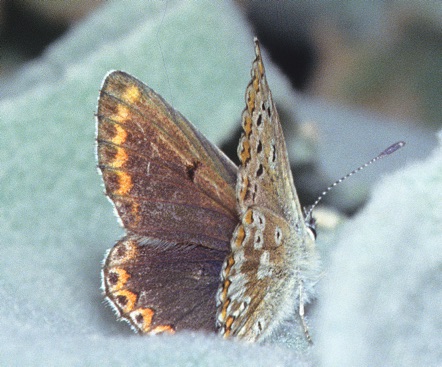 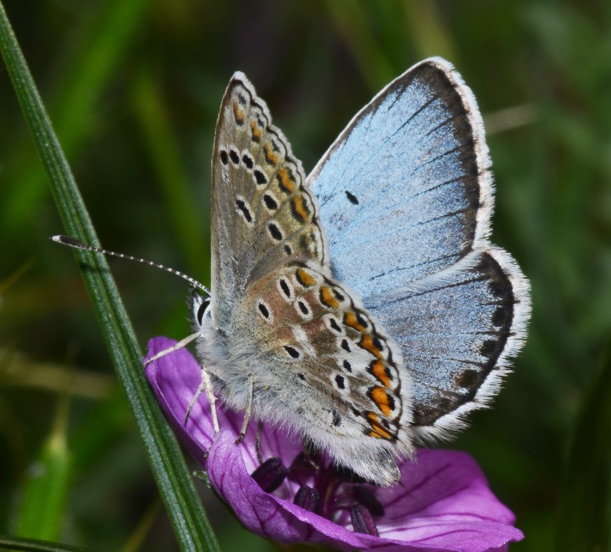
1a. Aricia anteros, distribution map (09.i.2025).  Historical data ; Historical data ;  Additional data from the 2018 update ; Additional data from the 2018 update ;  New observations since the 2018 update. New observations since the 2018 update.
1b. Aricia anteros ♂ upperside. Vig, Albania (© Sylvain Cuvelier)
1c. Habitat of Aricia anteros. Vig, Albania (© Sylvain Cuvelier)
1d. Aricia anteros ♂ underside. Vig, Albania (© Sylvain Cuvelier)
1e. Aricia anteros ♂ upperside. Vig, Albania (© Sylvain Cuvelier)
1d. Aricia anteros ♀ upperside. Greece (© Lazaros Pamperis)
1e. Aricia anteros ♂ upperside. Greece (© Lazaros Pamperis)
Description
♂♂
Small butterfly. Fw: 13-15 mm.
Ups: gleaming pale blue gc, dark marginal border.
Upf: small black discal spot.
Uph: small round antemarginal spots, sometimes with orange traces.
Uns: pale grey-brown gc, usual markings.
Unf: no cellular spot.
Unh: postdiscal spot in s6 displaced towards the base, gap before spot in s5.
♀♀
Similar size.
Ups: brown gc.
Upf:black discal spot and orange submarginal lunules (sometimes incomplete row)
Uph: conspicuous round dark antemarginal spots bordered with pale blue-greyish scales, in orange lunules bordered towards the base with small black triangular markings.
Uns: brown gc, black spots in usual pattern.
Unf: no cellular spot.
Unh: markings similar as ♂♂, orange lunules more developed and brighter orange.
Similar species
Aricia have a postdiscal spot in s6 that is clearly displaced to the base.
This
is useful to check versus similar looking Polyommatinae (e.g. Polyommatus eros ♂♂)
♂♂ Aricia anteros always gleaming pale blue gc, ♂♂ Aricia agestis and Aricia artaxerxes always brown.
Life cycle
Adults: one to three generations (depending on altitude) from May to September.
Egg: probably short stage.
Caterpillar: probably overwintering as young larva and feeding again in spring.
Pupa: probably short stage.
Habitat
Aricia anteros inhabits dry, rocky, flowery slopes on limestone from 250 m to above 2000 m a.s.l.
Spatial requirement modest, population density can be high, nomadic.
Foodplants
Caterpillars feed on different Geranium sp and Erodium sp.
Butterflies actively feed on a large variety of flowers.
Distribution
Albania: local in the mountains.
Balkan: AL - BG - BIH - GR - HR - NMK - MNE - RKS - RO - SLO - SRB
Europe: IB - IT - ALP - BAL - NWE - UK - SCA - EEU
Asia Minor, Transcaucasia, Caucasus and Iran.
Conservation status
Aricia anteros is not endangered.
Albanian Red List: LC.
IUCN Red List, category at the Mediterranean level: LC.
Useful links
Pyrgus.de
Lepiforum
Euroleps
|
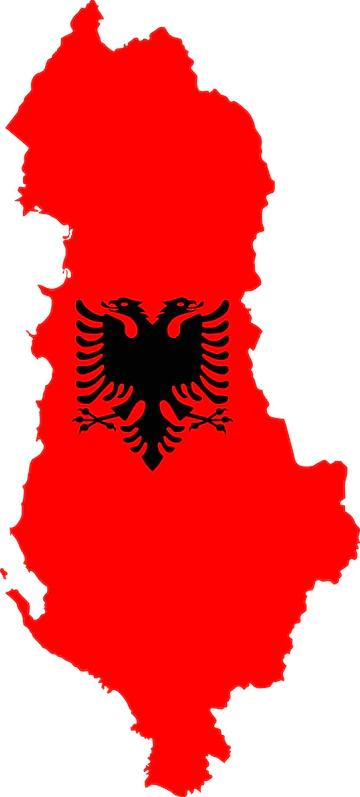 xx
xx 



 Historical data ;
Historical data ;  Additional data from the 2018 update ;
Additional data from the 2018 update ;  New observations since the 2018 update.
New observations since the 2018 update.